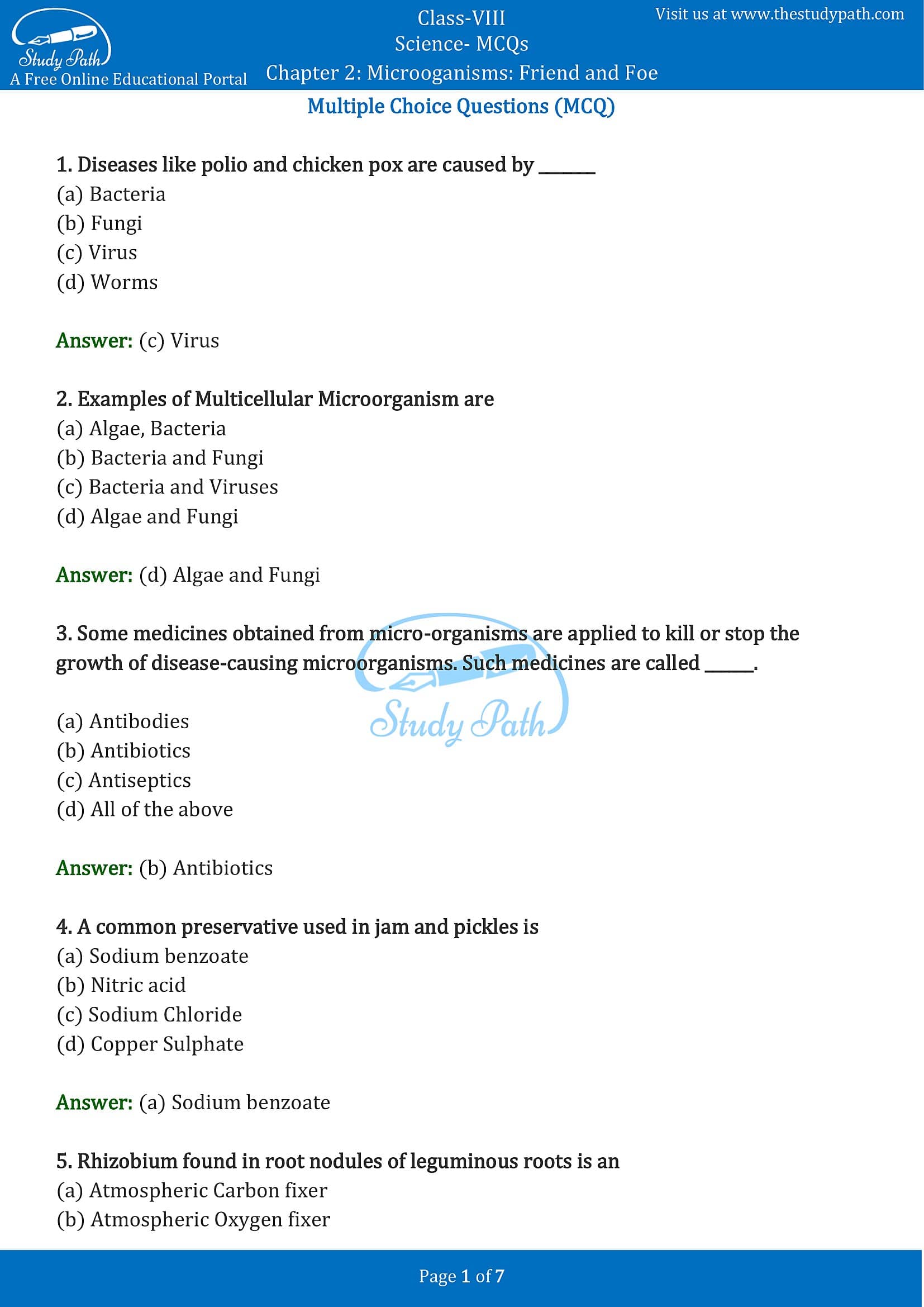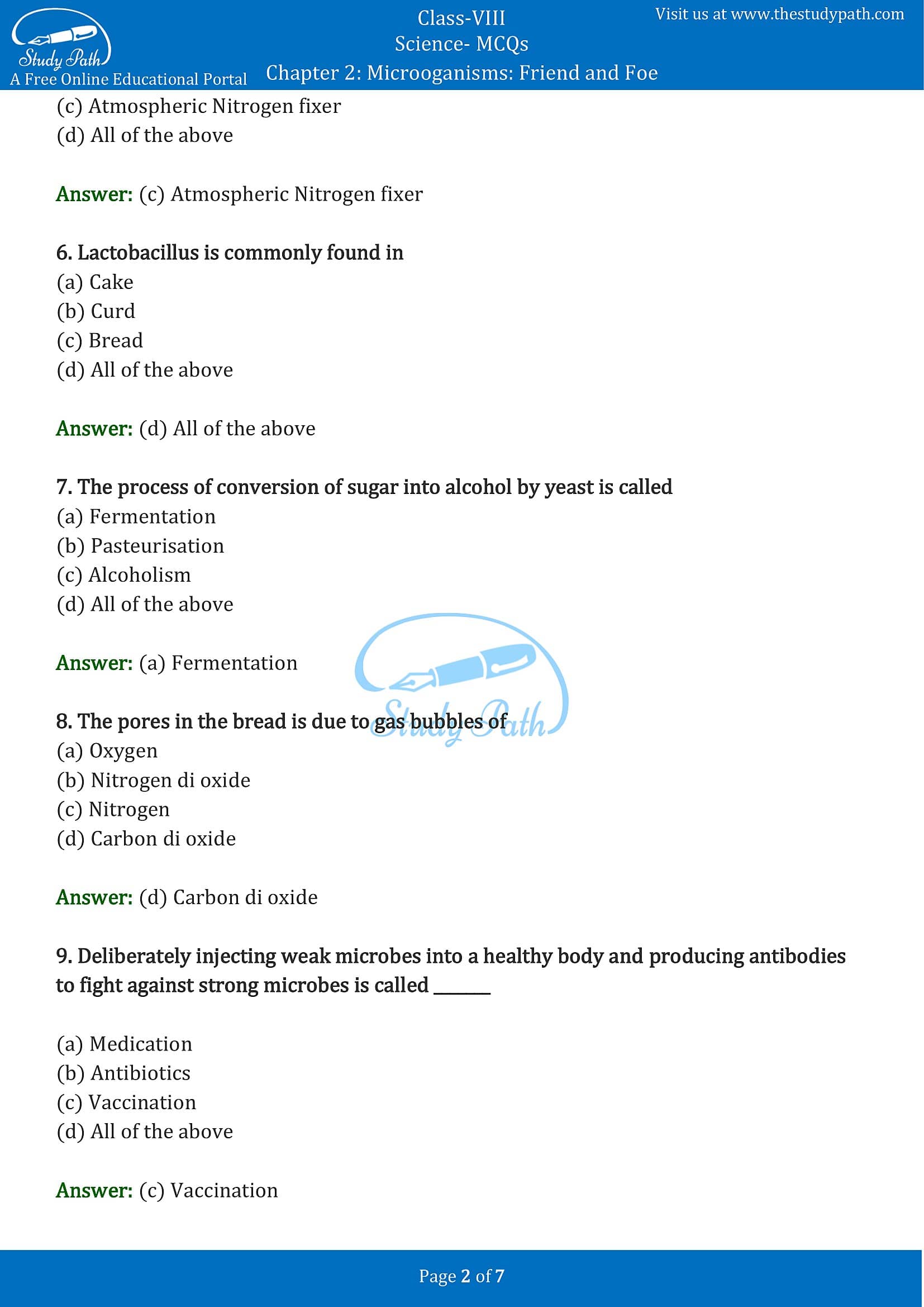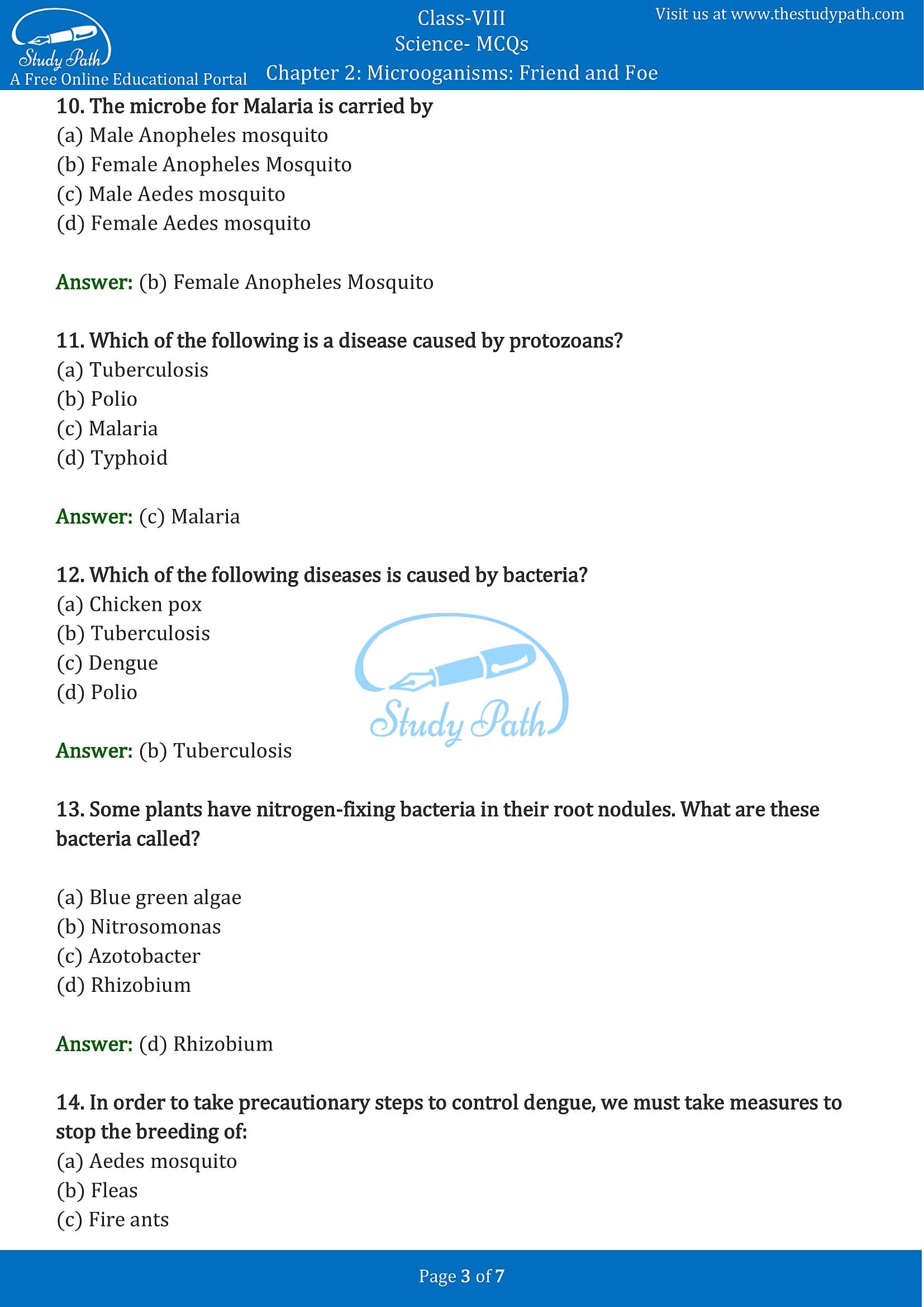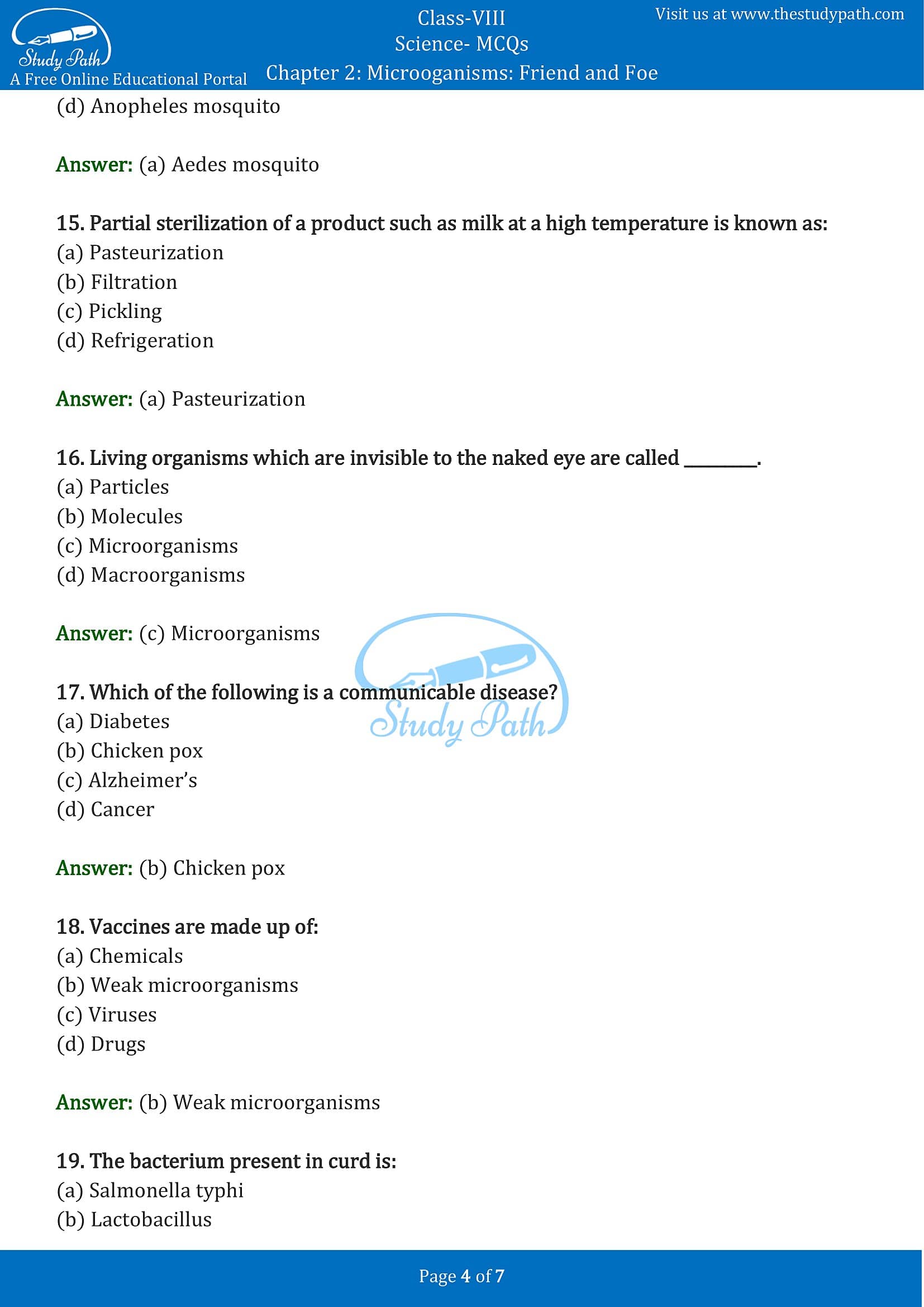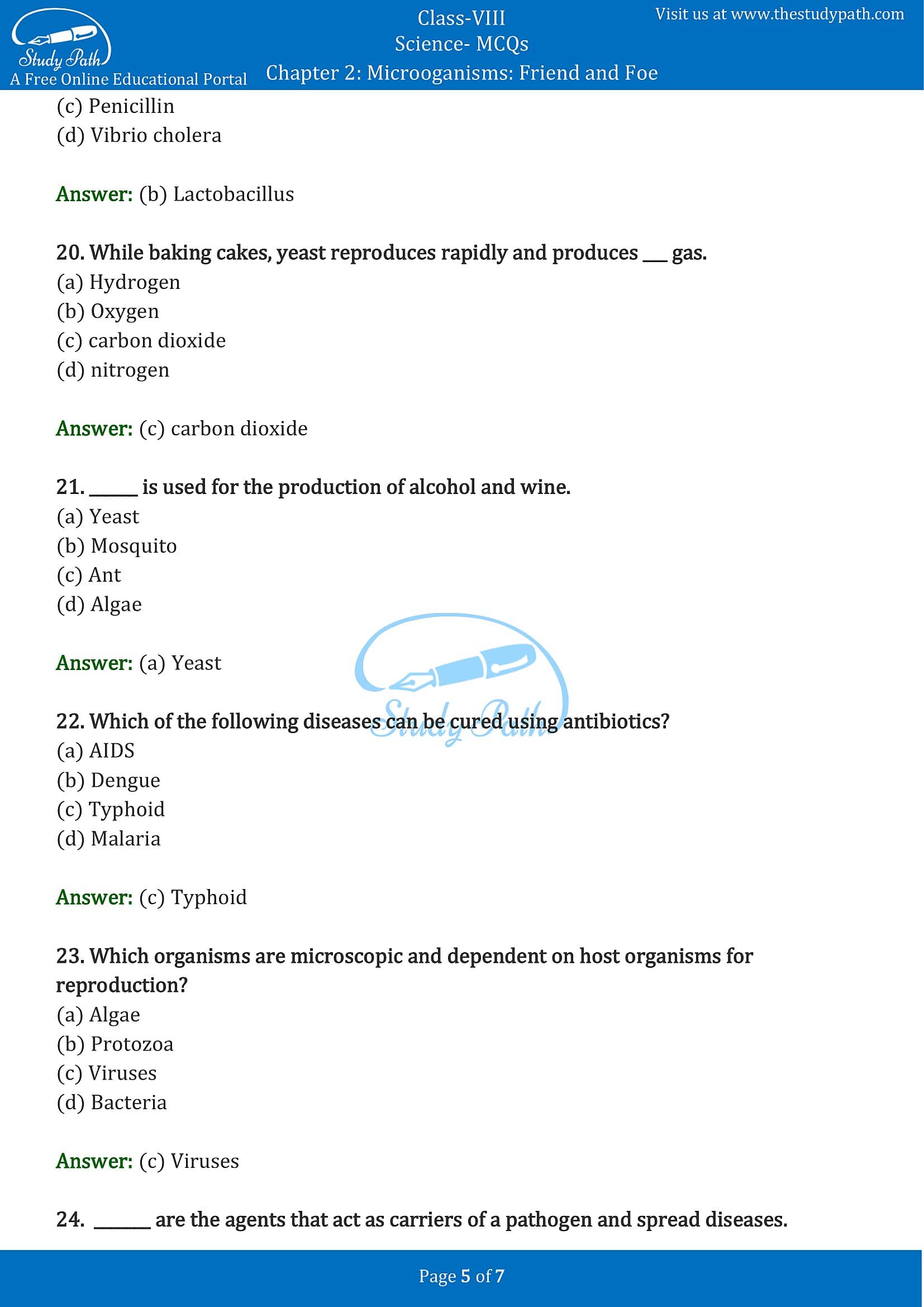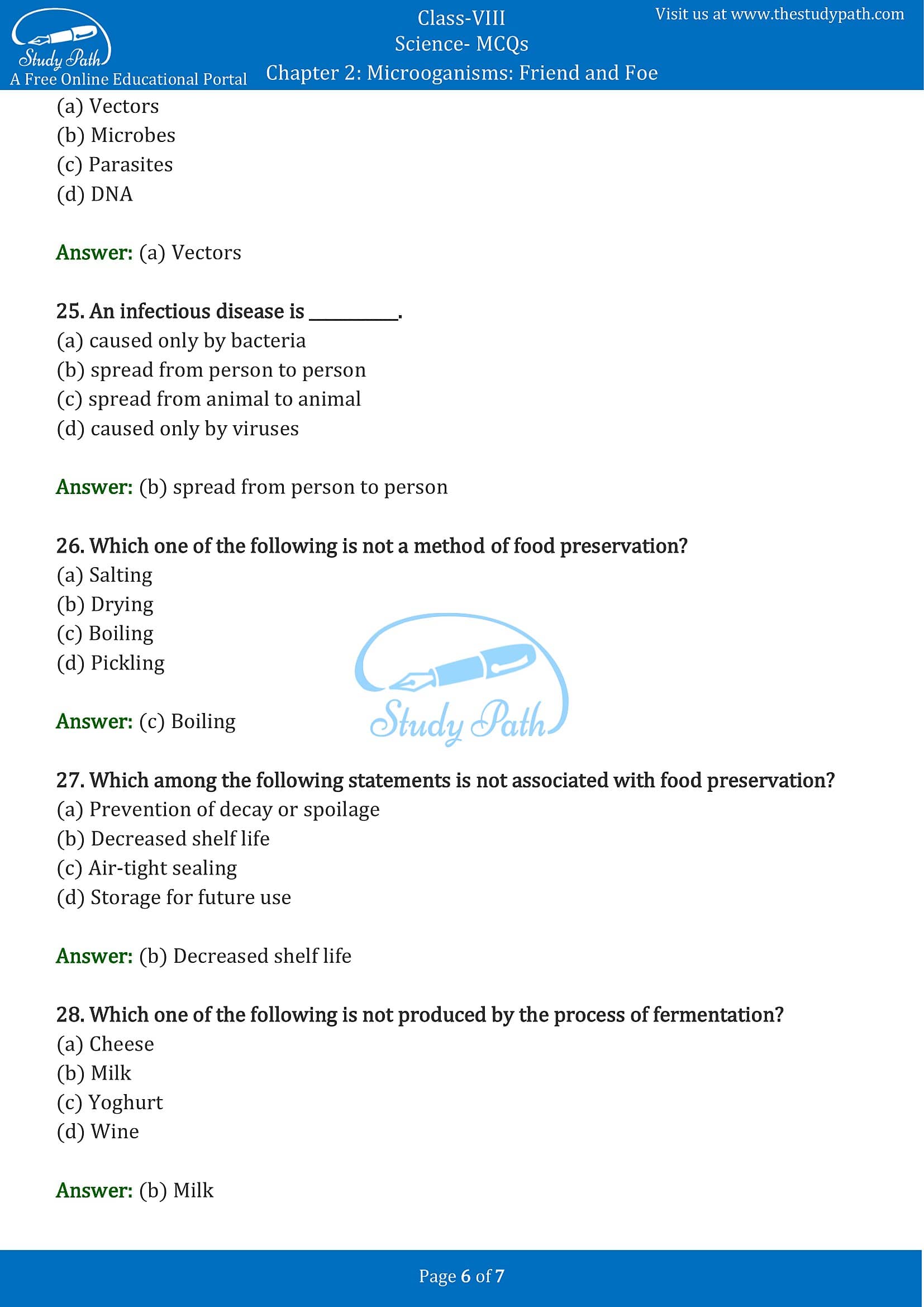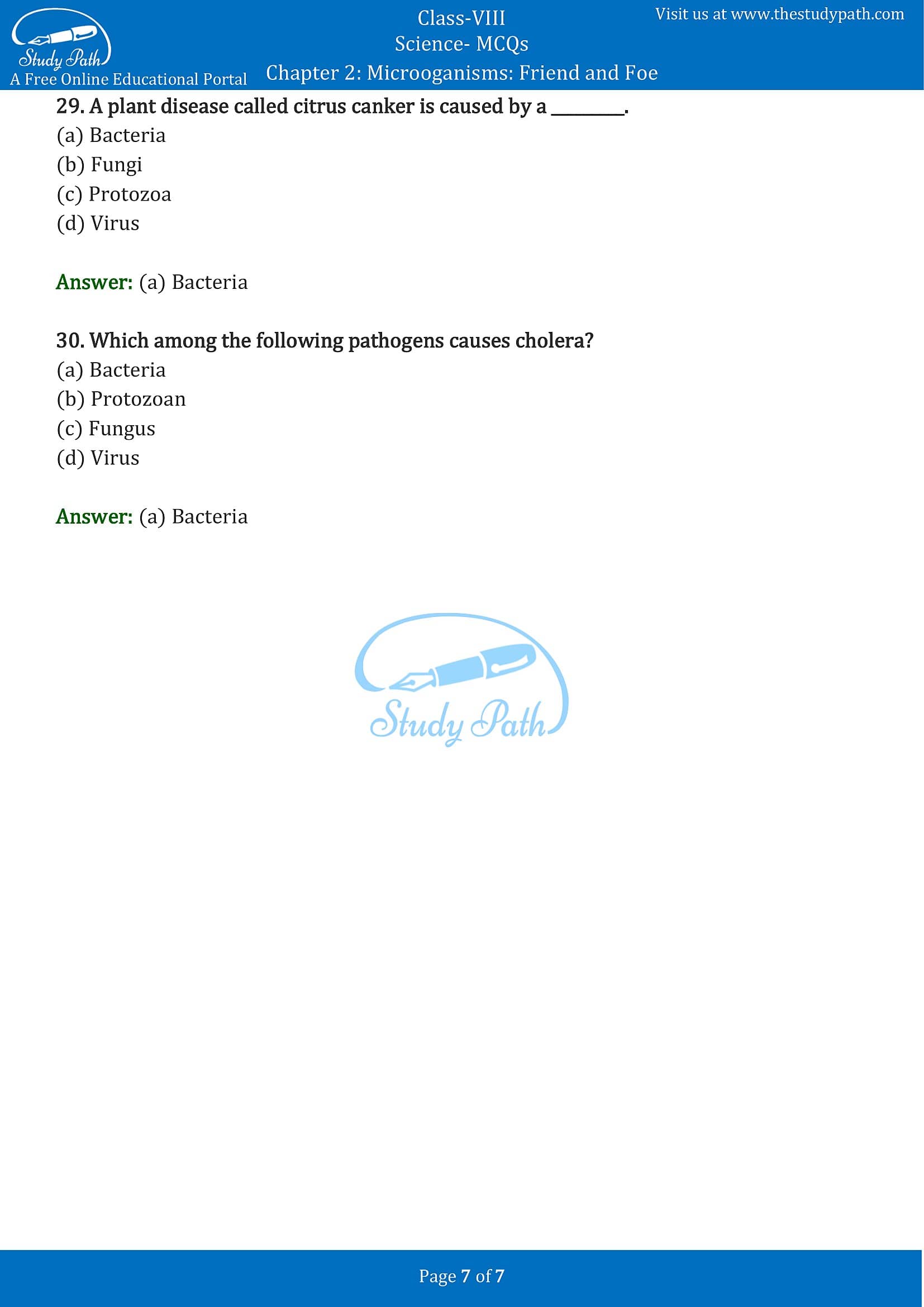Class 8 Science Chapter 2 Microorganisms Friend and Foe MCQ with Answers
Class 8 Science Chapter 2 Microorganisms: Friend and Foe MCQ (Multiple Choice Questions) with Answers is available here in PDF format. CBSE Class 8 Science Microorganisms: Friend and Foe Objective Questions helps the students to understand the concepts thoroughly and to score good marks. Practising these MCQs will help you to answer every question that is being asked in the exams.
At Study Path, you can download PDF of Multiple Choice Questions for Class 8 Chapter 2 Microorganisms Friend and Foe MCQ for free. We prepared the MCQs on the basis latest exam Pattern. Students can solve these MCQs before the exam to know their preparation level.
Microorganisms Friend and Foe Class 8 MCQ with Answers
Multiple Choice Questions (MCQs)
1. Diseases like polio and chicken pox are caused by _______
(a) Bacteria
(b) Fungi
(c) Virus
(d) Worms
Answer: (c) Virus
2. Examples of Multicellular Microorganism are
(a) Algae, Bacteria
(b) Bacteria and Fungi
(c) Bacteria and Viruses
(d) Algae and Fungi
Answer: (d) Algae and Fungi
3. Some medicines obtained from micro-organisms are applied to kill or stop the growth of disease-causing microorganisms. Such medicines are called ______.
(a) Antibodies
(b) Antibiotics
(c) Antiseptics
(d) All of the above
Answer: (b) Antibiotics
4. A common preservative used in jam and pickles is
(a) Sodium benzoate
(b) Nitric acid
(c) Sodium Chloride
(d) Copper Sulphate
Answer: (a) Sodium benzoate
5. Rhizobium found in root nodules of leguminous roots is an
(a) Atmospheric Carbon fixer
(b) Atmospheric Oxygen fixer
(c) Atmospheric Nitrogen fixer
(d) All of the above
Answer: (c) Atmospheric Nitrogen fixer
6. Lactobacillus is commonly found in
(a) Cake
(b) Curd
(c) Bread
(d) All of the above
Answer: (d) All of the above
7. The process of conversion of sugar into alcohol by yeast is called
(a) Fermentation
(b) Pasteurisation
(c) Alcoholism
(d) All of the above
Answer: (a) Fermentation
8. The pores in the bread is due to gas bubbles of
(a) Oxygen
(b) Nitrogen di oxide
(c) Nitrogen
(d) Carbon di oxide
Answer: (d) Carbon di oxide
9. Deliberately injecting weak microbes into a healthy body and producing antibodies to fight against strong microbes is called _______
(a) Medication
(b) Antibiotics
(c) Vaccination
(d) All of the above
Answer: (c) Vaccination
10. The microbe for Malaria is carried by
(a) Male Anopheles mosquito
(b) Female Anopheles Mosquito
(c) Male Aedes mosquito
(d) Female Aedes mosquito
Answer: (b) Female Anopheles Mosquito
11. Which of the following is a disease caused by protozoans?
(a) Tuberculosis
(b) Polio
(c) Malaria
(d) Typhoid
Answer: (c) Malaria
12. Which of the following diseases is caused by bacteria?
(a) Chicken pox
(b) Tuberculosis
(c) Dengue
(d) Polio
Answer: (b) Tuberculosis
13. Some plants have nitrogen-fixing bacteria in their root nodules. What are these bacteria called?
(a) Blue green algae
(b) Nitrosomonas
(c) Azotobacter
(d) Rhizobium
Answer: (d) Rhizobium
14. In order to take precautionary steps to control dengue, we must take measures to stop the breeding of:
(a) Aedes mosquito
(b) Fleas
(c) Fire ants
(d) Anopheles mosquito
Answer: (a) Aedes mosquito
15. Partial sterilization of a product such as milk at a high temperature is known as:
(a) Pasteurization
(b) Filtration
(c) Pickling
(d) Refrigeration
Answer: (a) Pasteurization
16. Living organisms which are invisible to the naked eye are called _________.
(a) Particles
(b) Molecules
(c) Microorganisms
(d) Macroorganisms
Answer: (c) Microorganisms
17. Which of the following is a communicable disease?
(a) Diabetes
(b) Chicken pox
(c) Alzheimer’s
(d) Cancer
Answer: (b) Chicken pox
18. Vaccines are made up of:
(a) Chemicals
(b) Weak microorganisms
(c) Viruses
(d) Drugs
Answer: (b) Weak microorganisms
19. The bacterium present in curd is:
(a) Salmonella typhi
(b) Lactobacillus
(c) Penicillin
(d) Vibrio cholera
Answer: (b) Lactobacillus
20. While baking cakes, yeast reproduces rapidly and produces ___ gas.
(a) Hydrogen
(b) Oxygen
(c) carbon dioxide
(d) nitrogen
Answer: (c) carbon dioxide
21. ______ is used for the production of alcohol and wine.
(a) Yeast
(b) Mosquito
(c) Ant
(d) Algae
Answer: (a) Yeast
22. Which of the following diseases can be cured using antibiotics?
(a) AIDS
(b) Dengue
(c) Typhoid
(d) Malaria
Answer: (c) Typhoid
23. Which organisms are microscopic and dependent on host organisms for reproduction?
(a) Algae
(b) Protozoa
(c) Viruses
(d) Bacteria
Answer: (c) Viruses
24. _______ are the agents that act as carriers of a pathogen and spread diseases.
(a) Vectors
(b) Microbes
(c) Parasites
(d) DNA
Answer: (a) Vectors
25. An infectious disease is ___________.
(a) caused only by bacteria
(b) spread from person to person
(c) spread from animal to animal
(d) caused only by viruses
Answer: (b) spread from person to person
26. Which one of the following is not a method of food preservation?
(a) Salting
(b) Drying
(c) Boiling
(d) Pickling
Answer: (c) Boiling
27. Which among the following statements is not associated with food preservation?
(a) Prevention of decay or spoilage
(b) Decreased shelf life
(c) Air-tight sealing
(d) Storage for future use
Answer: (b) Decreased shelf life
28. Which one of the following is not produced by the process of fermentation?
(a) Cheese
(b) Milk
(c) Yoghurt
(d) Wine
Answer: (b) Milk
29. A plant disease called citrus canker is caused by a _________.
(a) Bacteria
(b) Fungi
(c) Protozoa
(d) Virus
Answer: (a) Bacteria
30. Which among the following pathogens causes cholera?
(a) Bacteria
(b) Protozoan
(c) Fungus
(d) Virus
Answer: (a) Bacteria
At Study Path, you can also learn more about science chapter 2 Microorganisms: Friend and Foe by accessing the free exhaustive list of study materials and resources related to the chapter such as NCERT Solutions, Important Questions and Extra Questions.
